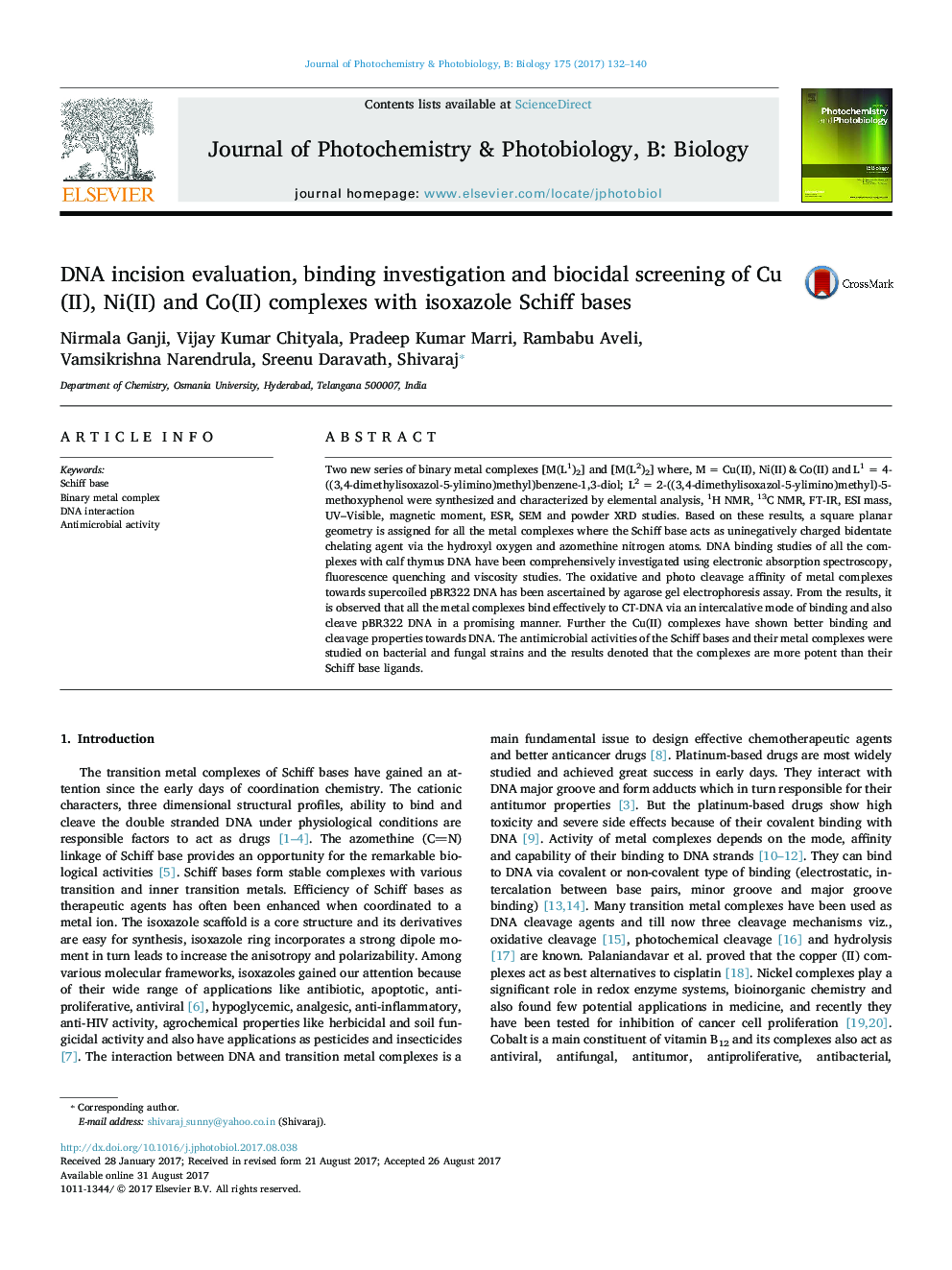| کد مقاله | کد نشریه | سال انتشار | مقاله انگلیسی | نسخه تمام متن |
|---|---|---|---|---|
| 6452522 | 1418058 | 2017 | 9 صفحه PDF | دانلود رایگان |

- Isoxazole Schiff bases and their complexes have been synthesized and characterized.
- Cu(II), Ni(II) and Co(II) complexes have acquired square planar geometry.
- Complexes interacted with CT-DNA via an intercalation mode of binding.
- Metal complexes act as good DNA cleavage agents.
- Metal complexes have shown better inhibitory potential towards tested microorganisms.
Two new series of binary metal complexes [M(L1)2] and [M(L2)2] where, MÂ =Â Cu(II), Ni(II) & Co(II) and L1Â =Â 4-((3,4-dimethylisoxazol-5-ylimino)methyl)benzene-1,3-diol; L2Â =Â 2-((3,4-dimethylisoxazol-5-ylimino)methyl)-5-methoxyphenol were synthesized and characterized by elemental analysis, 1H NMR, 13C NMR, FT-IR, ESI mass, UV-Visible, magnetic moment, ESR, SEM and powder XRD studies. Based on these results, a square planar geometry is assigned for all the metal complexes where the Schiff base acts as uninegatively charged bidentate chelating agent via the hydroxyl oxygen and azomethine nitrogen atoms. DNA binding studies of all the complexes with calf thymus DNA have been comprehensively investigated using electronic absorption spectroscopy, fluorescence quenching and viscosity studies. The oxidative and photo cleavage affinity of metal complexes towards supercoiled pBR322 DNA has been ascertained by agarose gel electrophoresis assay. From the results, it is observed that all the metal complexes bind effectively to CT-DNA via an intercalative mode of binding and also cleave pBR322 DNA in a promising manner. Further the Cu(II) complexes have shown better binding and cleavage properties towards DNA. The antimicrobial activities of the Schiff bases and their metal complexes were studied on bacterial and fungal strains and the results denoted that the complexes are more potent than their Schiff base ligands.
Graphical Abstract97
Journal: Journal of Photochemistry and Photobiology B: Biology - Volume 175, October 2017, Pages 132-140